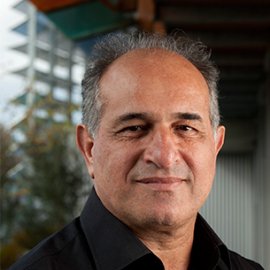Dean - Scientific College of Design - Muscat, Sultanate of Oman

octobre 2012 à juin 2013
Professor Husseini’s interest in the arts of design, Arabic calligraphy, and Islamic art dates from his childhood. The long hours he devoted every day to practising these arts were rewarded by regularly winning first prize during his studies. He had frequent contact with instructors from Iraq, Egypt, and Turkey specialized in traditional Arabic calligraphy. He was always awarded certificates of excellence and was at the top of the list of graduates when he graduated from Baghdad University in Fine Arts. He pursued his higher education until he earned his PHD. Then he was elected as Dean of the college of Fine Arts where he worked tirelessly in an effort to rebuild it after the damage it sustained in 2003. Professor Ayad left Iraq in 2006 because of anarchy and those killing campaigns that targeted university professors. He traveled to different countries and eventually settled in Muscat where he was assigned as Dean of the Scientific College of Design for which he participated in setting strategic and action plans. To maintain his high level of education, he has never stopped doing artistic works for big projects or refrained from conducting research or participating in international conferences. He has also been an active member on some jury committees assessing international artistic festivals. He wrote a summary for his latest book entitled Art of Design which won the Sheik Zayed’Book award for 2010.
Download CV by clicking below:
Theory of aesthetic in the Art of Design
@font-face { font-family: "Calibri"; }p.MsoNormal, li.MsoNormal, div.MsoNormal { margin: 0cm 0cm 10pt; line-height: 115%; font-size: 11pt; font-family: "Times New Roman"; }p { margin-right: 0cm; margin-left: 0cm; font-size: 12pt; font-family: "Times New Roman"; }div.Section1 { page: Section1; }
The theory sketches out three levels of the art of design: The first one is (Future art) a three-volume level which casts light on philosophy, theory and application. The second one deals with a contentious issue pertaining to the relationship between thought and existence. The third one has to do with knowledge of substance as a developing relationship expressing people’s need for an integral range of values which are spiritual, knowledge-based, aesthetic, and ethical, and which utilizes aesthetics in all aspects of life as a proof that people have shifted from a simple speech system to another one which is sophisticated and full-fledged. To solve the equation that brings together thought, aesthetics and benefit, this system comprised all arts of design, such as architecture, industry, interior design, decor, furniture, fashion, tools, jewelry, printing, various digital techniques...etc. Now sciences, technology, industry, production, marketing, economic feasibility, and capital have all been subsumed under the world of aesthetics; as such there is no longer any need to enjoy artistic beauty by looking at a portrait or a statue in a museum. This beauty can be enjoyed in markets, daily life and throughout the entire world. This has led to the establishment of the pragmatic philosophy of aesthetics through function, benefit, and use and this was supported by propounding the aesthetics theory as to the art of design with all its various values: technical, materialistic, pragmatic, communicative, modern and future on the one hand and shifting from the analogical system to the digital one driven by the information and technology revolution on the other hand. This theory gained its authenticity by transforming all these concepts into practical experiments taking into consideration people’s interests.